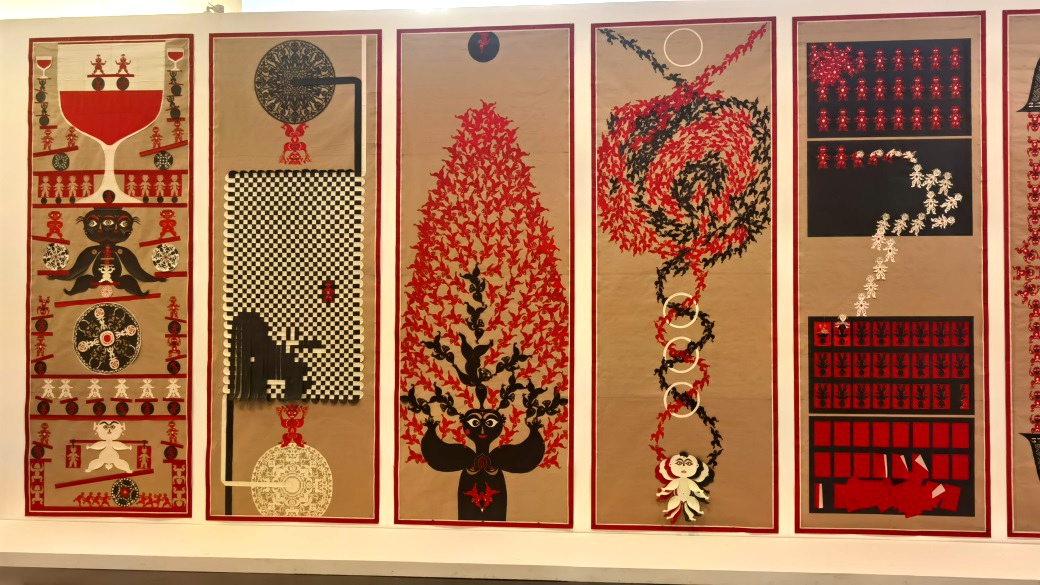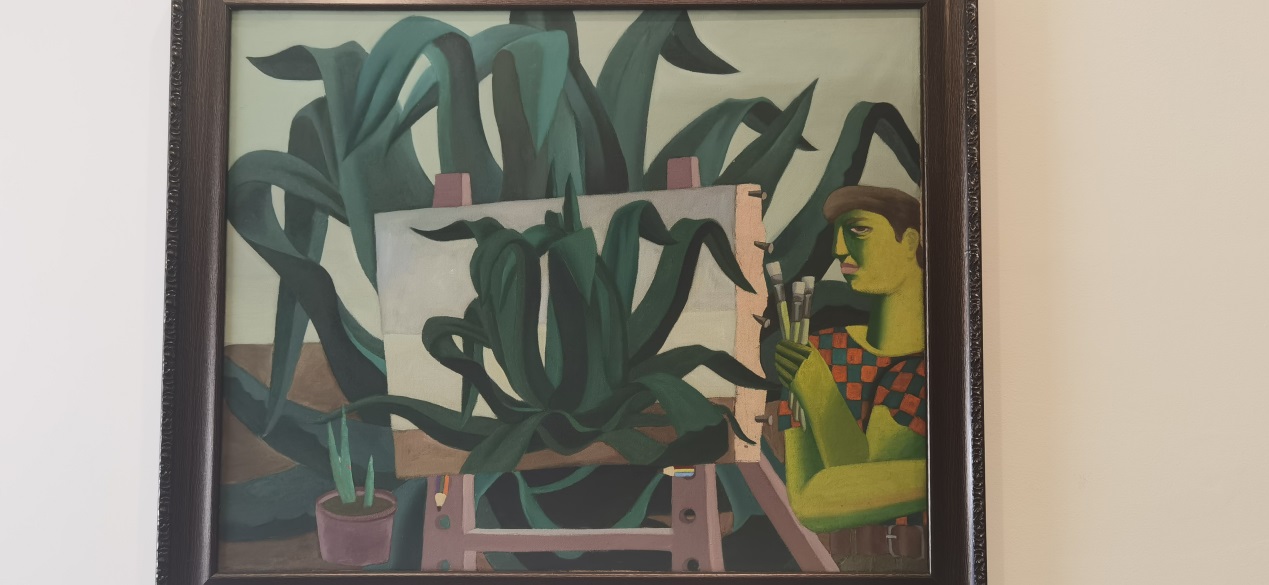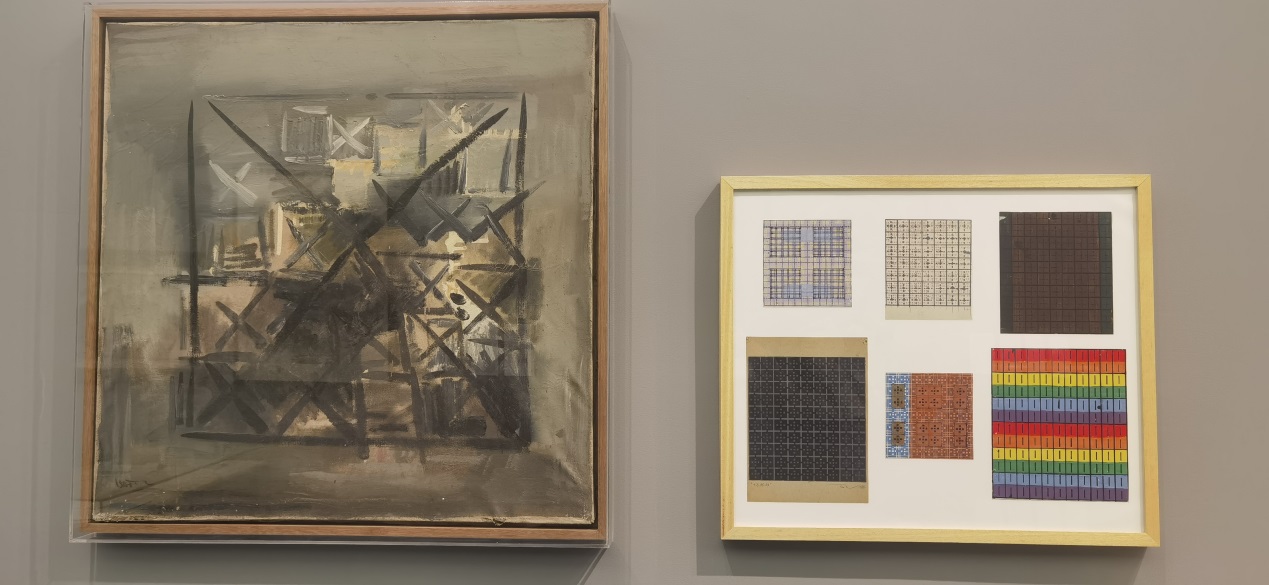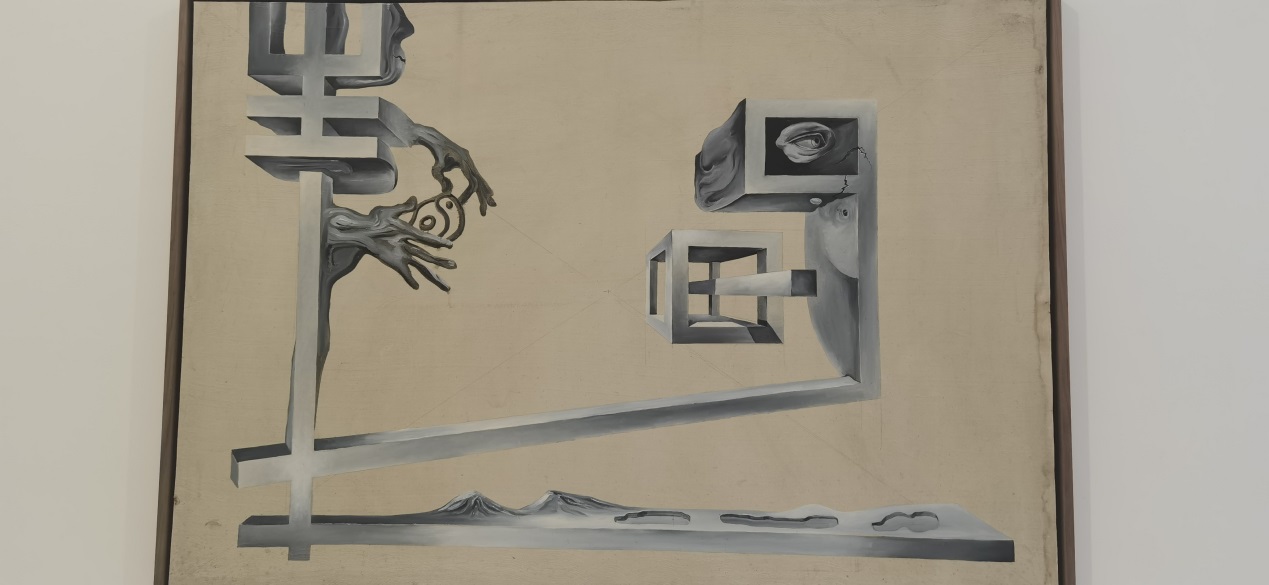02:57

China began a period of stable development in the 1980s with the implementation of a reform and opening-up policy. It was also an important decade for the art world as Chinese artists began to experiment with different kinds of styles. An exhibition at the Inside-Out Art Museum in Beijing displays art pieces of this period.
The artwork exhibited at the Inside-Out Art Museum aims to reflect the changes and development in Chinese artists' thoughts and creations in the mid and late 1980s.

"Langya Grass, Langya Grass on the Easel and the Person" by Li Bangyao. /CGTN
"Langya Grass, Langya Grass on the Easel and the Person" by Li Bangyao. /CGTN
At the beginning of 1985, many oil painters for the first time promoted a "revolution in ideas." Over the next several years, artists focused on the two creative orientations of a "revolution in ideas" and "exploration in artistic forms."
"Because of the introduction of post-modernist thinking, a lot of artists gave up dependence on developing one singular artistic style, a formal language that an artist was usually considered to be recognized for," curator Lu Yinghua said. "Instead, they used different artistic languages."
Many artists switched their personal styles frequently around 1987.
"In one year they could be doing realistic paintings, in the second year, they switched to abstract paintings. This did not only happened to the young generation of artists, but also older generations," Lu said.

"Taboo" by Ding Yi (1986) (L) and six sketches of the "Appearance of Crosses" series by Ding Yi (1987). /CGTN
"Taboo" by Ding Yi (1986) (L) and six sketches of the "Appearance of Crosses" series by Ding Yi (1987). /CGTN
Neorealism was another new phenomenon in the Chinese art world in the 1980s. Artists tended to shy away from expressions of emotion and the representation of typical characters in their work. Without any narrative content, they represented a certain subject, scenario or character from real life by highlighting the subject of depiction itself.
"From 1986, in different parts of China, there were different artistic groups that carried out radical Dadaist artistic experiment," Lu said.
The Xiamen Dada, for instance, hosted an exhibition called Event Exhibition at the end of 1986 by bringing garbage from a construction site to the empty space of the museum.
"From today's perspective, this was very much an anti-institutional approach to de-construct and undermine the superior status of artworks and artists," Lu told CGTN.

"Infinity" by Gu Wenda. /CGTN
"Infinity" by Gu Wenda. /CGTN
The exhibition reveals how China's art scene unfolded through the 1980s. It runs through May 9, 2021 at Beijing's Inside-Out Art Museum.
(Cover: Artwork "Magic and Acrobatics" by Lyu Shengzhong. /CGTN)

